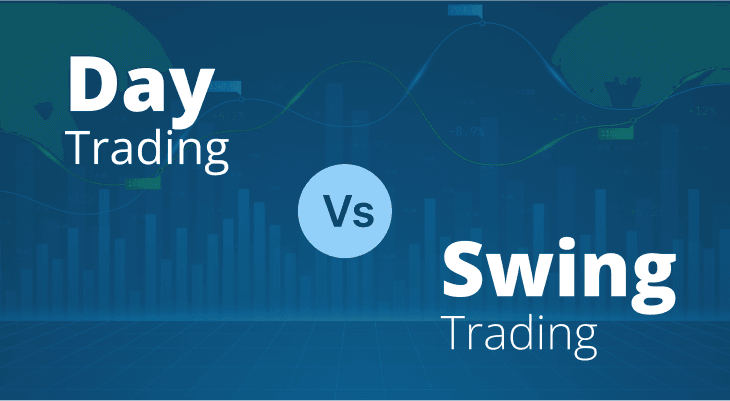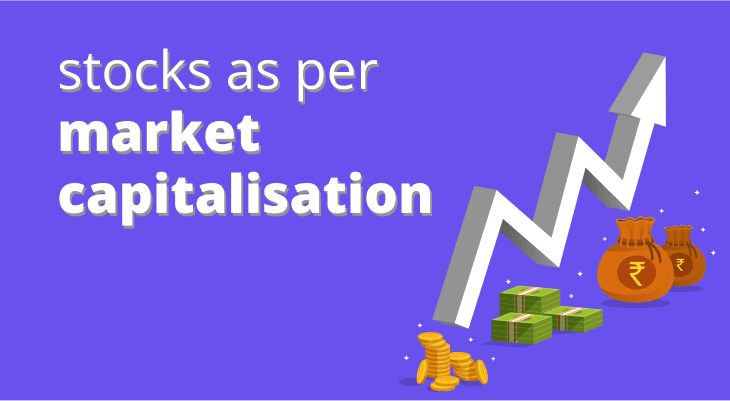
Day Trading vs Swing Trading
Two popular strategies that active traders employ are – day trading and swing trading. Both approaches involve buying and selling securities within a relatively short time frame, but they differ in terms of time horizon, trading frequency, and overall strategy. In this blog, we will take a closer look at what is swing trading vs day trading, the differences between them, and highlight their characteristics, benefits, and considerations.
Day Trading 101
Day trading involves buying and selling securities within the same trading day, with the goal of profiting from short-term price fluctuations. Day traders focus on capturing intraday price movements and typically close all positions before the market closes. They rely on technical analysis, charts, and short-term indicators to make trading decisions.
In day trading, the time horizon is extremely short, typically ranging from minutes to a few hours. Day traders often employ strategies like scalping, momentum trading, and breakout trading to identify and exploit short-lived price movements. Since the focus is on intraday positions, day traders usually close all their positions before the market closes to avoid the risks associated with overnight price fluctuations. This requires careful monitoring of positions, setting profit targets, and implementing stop-loss orders to manage risk effectively.
Swing Trading 101
In comparison, swing trading has a longer time horizon compared to day trading. Swing traders aim to capture shorter-term trends and price swings that occur over a few days to several weeks. They hold positions for a longer duration and aim to take advantage of price movements by selling during market upswings and buying during downsings. Swing traders often use technical analysis, chart patterns, and fundamental analysis to identify potential trading opportunities.
Swing traders focus on profiting from price swings that occur during the intermediate term such as price reversals or corrections within the overall trend. This approach allows swing traders to take advantage of larger price movements compared to day trading, which can potentially result in higher profits. Swing trading requires a more comprehensive analysis of the market and securities. Traders often use technical indicators, trend lines, support and resistance levels, and other tools to identify potential swing trading opportunities. Due to the slightly longer holding period, swing traders have more flexibility and time to conduct research and make informed trading decisions.
Day Trading vs Swing Trading: Explained
Having understood the definitions of each, let us compare intraday vs swing trading based on certain key parameters.
Ideal Investor Profile
Day trading is best suited for active traders who can dedicate significant time to monitor the market and execute trades. It requires a high level of skill, experience, and risk tolerance. Swing trading is often favoured by traders who prefer a more relaxed trading approach and can devote a moderate amount of time to analysing and managing positions.
Day trading requires a high level of focus, discipline, and emotional control. Traders need to make quick decisions and manage risk effectively. Swing trading allows for more relaxed decision-making, with a focus on trend identification and position management.
Also note, day trading requires constant attention to the market during trading hours. Traders need to monitor price movements, news, and market conditions throughout the day. In swing trading, traders can analyse the market and place trades outside of trading hours, requiring less time commitment.
Initial Capital Needed In day trading vs swing trading, day trading usually requires more substantial capital as traders need enough buying power to take advantage of small price movements. Swing trading, with fewer trades and longer holding periods, may require less capital, but sufficient funds are still needed to cover margin requirements and potential losses.
Potential For Higher Returns
Day trading offers the potential for quick profits as traders take advantage of intraday price movements. However, it also carries higher risk due to the short time frame. Swing trading aims to capture larger price swings and trends, potentially leading to higher profits, but over a slightly longer period.
Trading Frequency
Day traders execute numerous trades in a single day, aiming to capitalise on small price movements. Contrary to this, swing traders typically execute fewer trades, focusing on capturing larger price swings over a slightly longer time frame.
Costs Of Trading
Day trading can involve higher trading costs due to frequent buying and selling, including commissions and fees. Swing trading, with fewer transactions, may result in lower trading costs.
In Conclusion
Day trading and swing trading are both popular trading strategies that offer distinct approaches to active trading. While day trading focuses on short-term price movements within a trading day, swing trading seeks to capture shorter-term trends over a slightly longer time frame. Day traders often execute multiple trades throughout the day, taking advantage of even the smallest price movements to accumulate profits. In contrast, swing trading has a longer time horizon allowing you to analyse the market and place trades outside of market hours, reducing the need for constant monitoring throughout the trading day.
Both strategies require knowledge, practice, and risk management. By carefully understanding the key differences between day trading vs swing trading and considering individual trading preferences, you can choose the approach that aligns best with your goals and trading style.
FAQ
What is the main difference between day trading and swing trading?
The key difference lies in the time horizon and trading frequency. Day trading involves buying and selling securities within the same trading day, while swing trading aims to capture shorter-term trends and price swings over a few days to weeks.
Which strategy is more suitable for beginners, day trading, or swing trading?
Both strategies require knowledge and practice. However, swing trading may be more suitable for beginners as it allows for a slightly longer time frame and potentially less intense decision-making.
Can day traders also engage in swing trading?
Yes, day traders can incorporate swing trading techniques if they identify longer-term trends or opportunities that align with their trading style.
Which strategy carries higher risks, day trading, or swing trading?
Both strategies carry their own set of risks. Day trading involves higher volatility and faster decision-making, making it potentially riskier. Swing trading aims to capture larger price swings but over a slightly longer time frame.
In intraday vs swing trading, which requires greater risk management?
Risk management is crucial in both strategies. You should implement appropriate stop-loss orders, position sizing, and risk-reward analysis to manage potential losses and protect capital.


